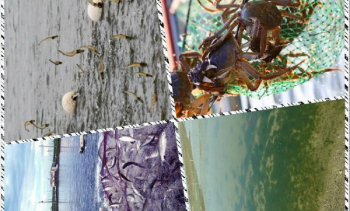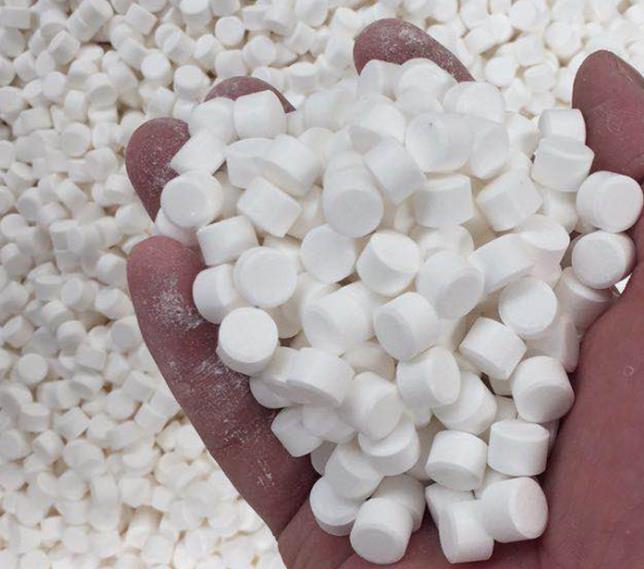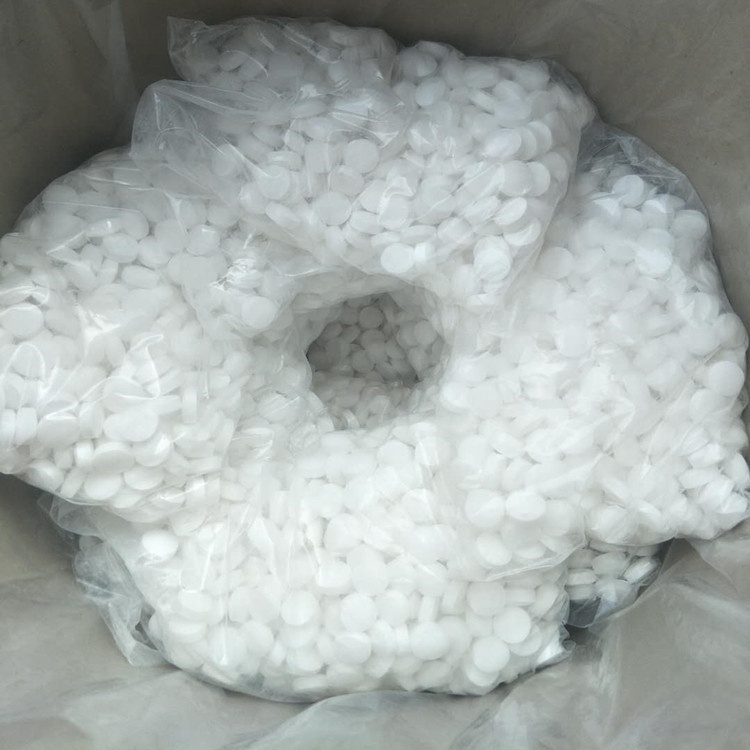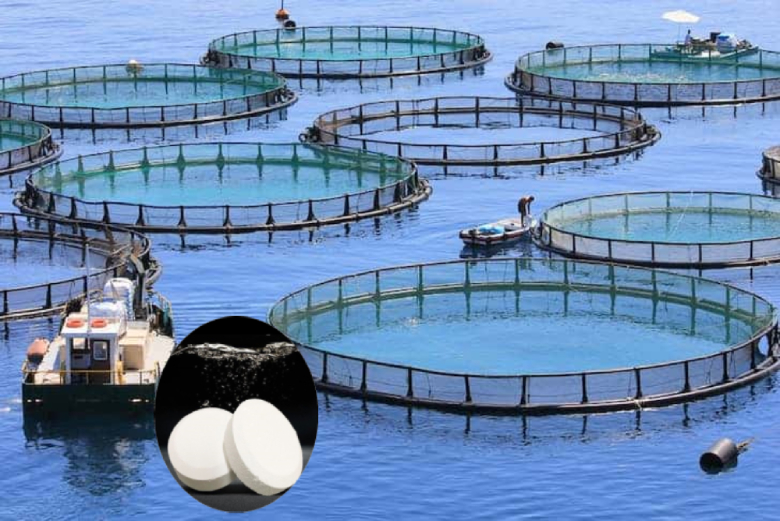General knowledge of potassium persulfate substrate tablets
General knowledge of potassium persulfate substrate tablets
This paper will introduce various aspects of knowledge of potassium hydrogen sulfate in detail, and combine with clinical practice technology to solve all kinds of questions in the breeding, hoping to effectively help farmers.

What is potassium persulfate compound?
Potassium persulfate refers to potassium persulfate compound salt, which is an inorganic acidic oxidant.
Potassium persulfate compound salt is a new type of reactive oxygen disinfectant. As the fifth generation of disinfectant, it has a very strong and effective non-chlorination oxidation ability.
Its aqueous solution is acidic, which is very suitable for disinfection of various water bodies. After dissolving, it will produce a variety of small molecule derivatives with high activity, such as free radicals and reactive oxygen species, etc., which will not produce toxic or side effect products in water bodies and have the characteristics of high safety.
Potassium persulfate kills bacteria in a way very similar to peroxyacetic acid.Peroxide bonds are respectively connected with sulfur atoms and carbon atoms. Potassium persulfate is an inorganic substance, and its disinfection effective component is single persulfate ion, which can oxidize microbial proteins and lead to microbial death.
Potassium bisulfate is a neutral salt, and the acidity of its aqueous solution is caused by hydrogen ions produced by the dissolution of potassium bisulfate in compound salt. But potassium persulfate is much more stable in acidic conditions than in neutral conditions, and decomposes rapidly in alkaline conditions.The compound compound salt of potassium persulfate is a disinfectant of potassium persulfate compound salt made by sodium chloride, organic acid and potassium persulphate. In aqueous solution, the special oxidation capacity of potassium persulphate is utilized to produce chain reaction in water to continuously produce new ecological oxygen, hypochlorous acid, free hydroxyl group and hydrogen peroxide.Through the oxidation of new ecological oxygen and free hydroxyl group, the permeability of cell membrane can be changed to make it burst, thus the normal protective layer can be achieved to kill bacteria, fungi, protozoa and viruses.

The three main functions of potassium persulfate:
1. The potential value of potassium persulfate for substrate improvement (oxidation, detoxification) is as high as 1.85v.Its oxidation capacity is higher than chlorine dioxide, potassium permanganate, strong chlorine essence, hydrogen peroxide and other most oxidants.This potential value can oxidize most organic matter, reduce oxygen consumption factor and reduce oxygen debt of sediment.And can oxidize the water body of iron bivalent into iron trivalent, manganese bivalent into manganese dioxide, nitrite into nitrate, hydrogen sulfide and other sulphides into sulfate,eliminate the damage of these substances to aquatic animals, repair the blackening and smelly sediment, sediment deterioration, hardening, heat, PH, and so on. At the same time, potassium persulfate can degrade the residual chloramine after the use of chlorine preparation and reduce the residual toxic substances.
2. sterilization in the process of disease, farmers use a variety of agents are still unable to cure the disease. The main reason is that the long-term use of the same disinfectant leads to the resistance of pathogenic bacteria.And potassium persulphate because of its unique bactericidal mechanism, won't make bacterium, virus produces drug resistance.Therefore, when refractory diseases of fish and shrimp cannot be treated, potassium bisulfate products can be used for 2 consecutive times to kill pathogens that cannot be killed by chlorine preparations or surface active agents.For the prevention of vibrio, bleeding and other diseases have a better effect, and will not cause the formation of resistance to pathogens.
3. Improved water quality can not only kill plankton such as algae, but also eliminate biological toxins such as algal toxin.In pond aquaculture, the water body is not only the living field of water products, but also the disposal place of feces, residues and other garbage.In particular, the density of aquaculture is too high, the self-purification capacity of water is limited, and the water quality is often abnormal, such as black water, smelly water, dark green water, algae and other circumstances.Potassium persulfate has strong oxidation, can supplement the lack of active oxygen in water, at the same time due to insufficient oxygen supply accumulated organic matter, ammonia nitrogen, salt, hydrogen sulfide and other harmful substances, to achieve the purpose of water quality control.
At present, the content and efficacy of potassium persulfate compound salt are mainly 5%, 10%, 15%, 20% and 50% in the domestic market, of which 5%, 10%, 15% and 20% are tablets and the remaining 50% are powders. 50% were mainly used in powder form to sterilize and kill algae; 5%, 10%, 15%, 20% are used to modify the base, currently the more used is 10% potassium persulfate compound salt.

Actual combat technology interaction of aquaculture:
1. Can it kill dinoflagellates? Yes, you can kill it with 50%, but increase the dosage. If you want to kill dinoflagellates, you need about 500 grams/ mu (1meter deep).
2.Can you kill the ring worm? No, potassium persulfate is not an insecticide.
3, how much concentration to use to achieve the effect of sterilization? See what bacterium kill, common bacterium USES 15%, 20% ok, if be like vibrio this kind of proposal is to use 50%. Take it to sterilize the words of an mu with 300-400 grams is ok, need successive 2-3 times, had better use powdery agent, do not use tablet.
4. How many hours does the bactericidal effect last? The laboratory can reach 10 hours, if the salinity of the pond water is relatively high for a long time, potassium persulfate after the first reaction and the water chloride ion reaction, forming hypochlorous acid, there is a certain bactericidal effect.
5, potassium persulfate white and light yellow which is good? It is not correct to judge which one is better by color alone. Color can be processed, with dyes, it is not recommended to judge the authenticity of color alone.

6, used to kill algae how much prawns will not affect? From the current data, 10% of the use of less than 1000 grams ( mu / 1 meter water depth) is not affected by shrimp, shrimp itself is not much harm. If it is a soil pond, it is recommended to use a small amount of it more than once, especially in the case that some poor resole products are used before, which may cause some adverse reactions, or even open the harmful residues at the bottom of the pond once, forming a negative chain effect.
7. Is the higher the content, the better, when changing the base? At present, the master, take 20% and 10% to compare, 20% is better than 10% of the substrate, bactericidal effect, because the content is high, the energy produced is larger. But 50% do not recommend to make tablets to change the background.
8. Can potassium persulfate compound salt degrade nitrite (oxidation)? Potassium persulfate can directly oxidize away part of the ammonia nitrogen and sulfite, but it is impossible to remove the nitrite once.
9. Is potassium persulfate harmful to algae? The harm to alga should divide two kinds of circumstances, it is the content of potassium hydrogen persulfate is relevant, the harm that content is high to alga can be bigger. Take 10% for example, its first function is to change the bottom, and then it will kill bacteria and harm algae when it has the ability. If the resole USES up energy, it won't hurt the algae. Two is in the case of thin water, after the use of fertilizer water.
10. Is powder used in combination with tablets? No need to use in combination, if the pure algae sterilization, use powder can be. If you want to change the base and sterilization together, it is recommended to use 20% tablets. Control vibrio with 50% powder.
